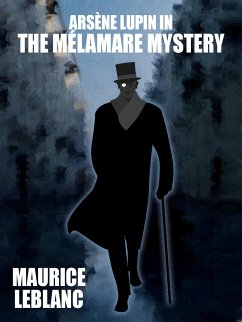
The Confessions of Arsene Lupin (eBook, ePUB)
Versandkostenfrei!
Sofort per Download lieferbar
1,99 €
inkl. MwSt.
Weitere Ausgaben:

PAYBACK Punkte
0 °P sammeln!
The Confessions of Arsene Lupin - After the black 813, Maurice Leblanc returned to lighter short stories, in the style of those of his first collection, Arsène Lupine gentleman burglar. They appeared in "Je sais tout" from April 1911. We find there the Lupine of the beginnings, charmer, to whom everything succeeds, in lost situations (The Infernal Trap and its moral "What it is to be a pretty boy!…") Or in the most impossible puzzles. solve (especially in The Sign of the Shadow and The Red Silk Scarf) Stories 1-Two hundred thousand Francs reward! 2-The wedding-ring 3-The sign of the sh...
The Confessions of Arsene Lupin - After the black 813, Maurice Leblanc returned to lighter short stories, in the style of those of his first collection, Arsène Lupine gentleman burglar. They appeared in "Je sais tout" from April 1911. We find there the Lupine of the beginnings, charmer, to whom everything succeeds, in lost situations (The Infernal Trap and its moral "What it is to be a pretty boy!…") Or in the most impossible puzzles. solve (especially in The Sign of the Shadow and The Red Silk Scarf) Stories 1-Two hundred thousand Francs reward! 2-The wedding-ring 3-The sign of the shadow 4-The infernal trap 5-The red silk scarf 6-Shadowed by death 7-A tragedy in the Forest of Morgues 8-Lupin's marriage 9-The invisible prisoner 10-Edith Swan-Neck Wikipedia
Dieser Download kann aus rechtlichen Gründen nur mit Rechnungsadresse in A, B, BG, CY, CZ, D, DK, EW, E, FIN, F, GR, HR, H, IRL, I, LT, L, LR, M, NL, PL, P, R, S, SLO, SK ausgeliefert werden.













